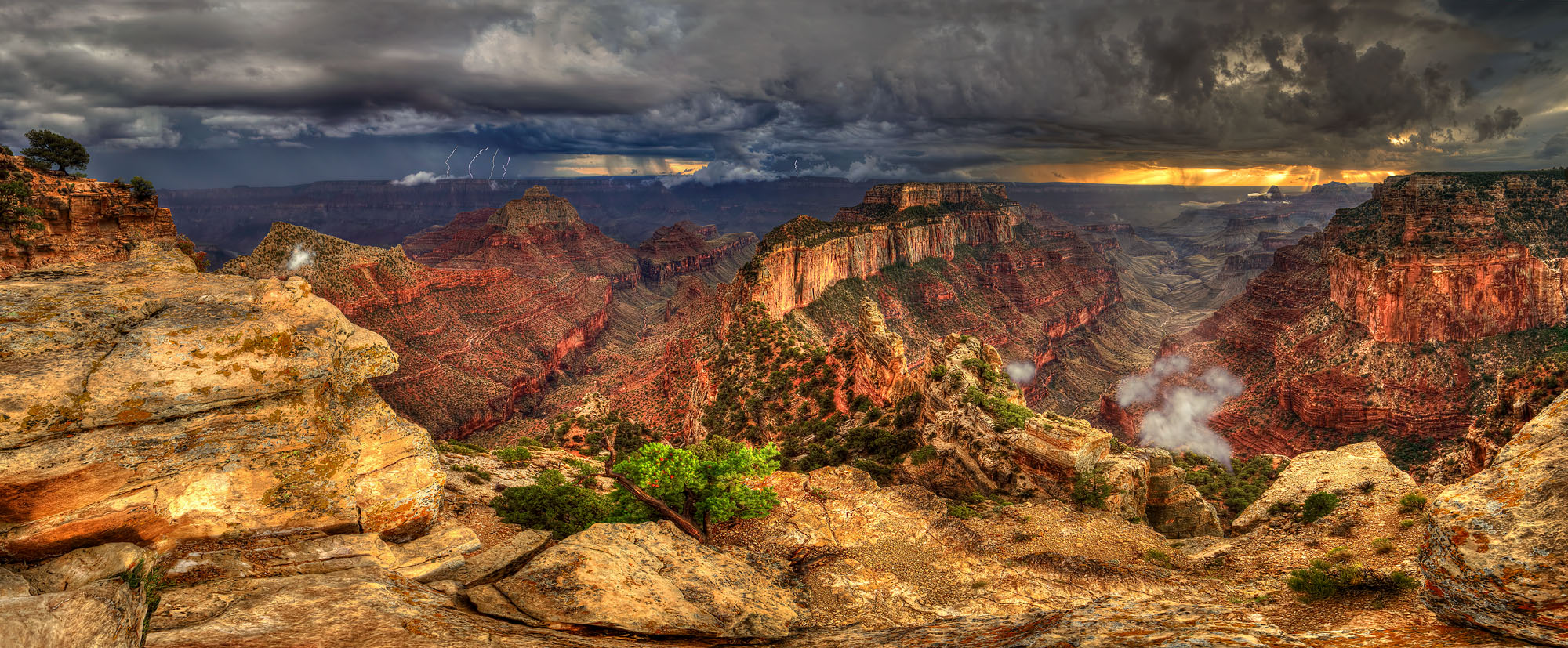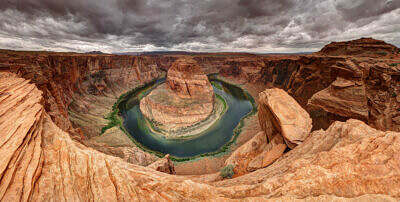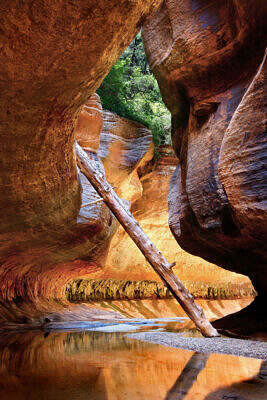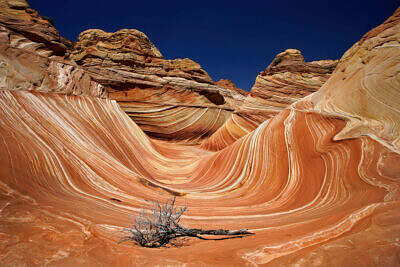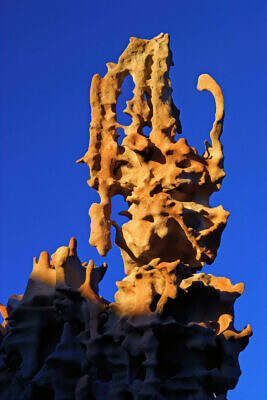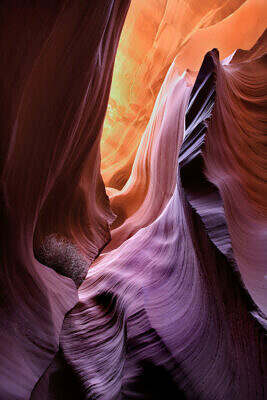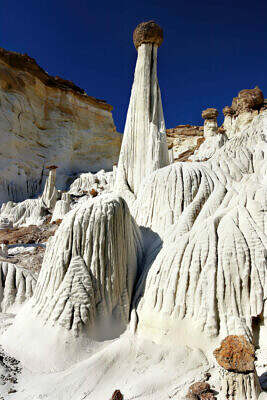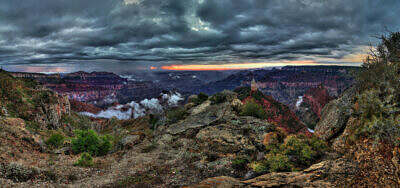It is an overwhelming adventure, a time of wonder with light and thunder, to experience a monsoon thunderstorm wave rolling across the Grand Canyon at sunset. Surrounded by storm cells with heavy rain and far too close lightning strikes of a highly active thunderstorm behind, the multiple echoes of the rolling thunders were deeply impressive. The panoramic view at the North Rim of the Grand Canyon near Cape Royal extends from Vishnu Canyon past Wotan’s thrones into the sunset in Clear Canyon.
Such moments of great sublimity revive deeply rooted connections to our home planet. These impressions awaken our instincts and with them the irreversible realization how unique our planet is and how closely we are connected to it.

